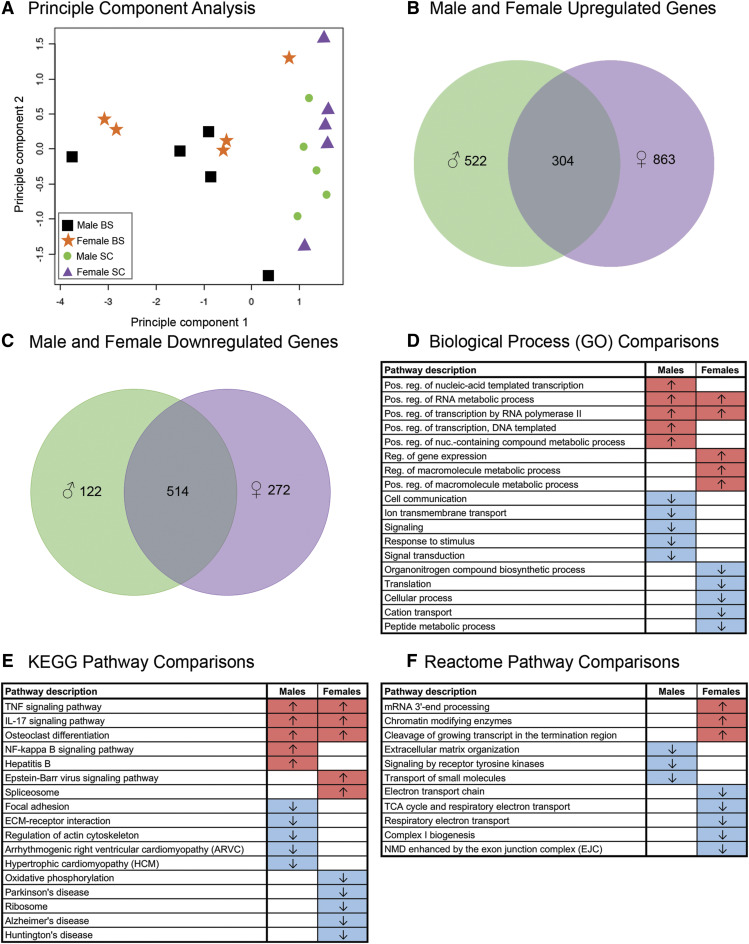Fig. 5.
Functional gene categories have little overlap between males and females. (A) Principle component analyses of microglia from male and female brainstem (BS) and cervical spinal cord (SC) (n = 5/treatment) show that CNS region, not sex, is the stronger driver of differential gene expression. (B) Venn diagram showing the total number of differentially upregulated genes in male and female spinal microglia compared with brainstem microglia. Of the differentially upregulated genes in spinal compared with brainstem microglia, 304 were shared by both sexes, 522 genes were unique to males, and 863 were unique to females. Genes expressed in males are shown in green, and genes expressed in females are shown in purple. (C) Venn diagram showing the total number of differentially upregulated genes in male and female spinal microglia compared with brainstem microglia. Of the differentially upregulated genes in spinal compared with brainstem microglia, 514 were shared by both sexes, 122 genes were unique to males, and 272 were unique to females. Genes expressed in males are shown in green, and genes expressed in females are shown in purple. Tables Biologic Process (GO class) (D), KEGG pathway (E), and Reactome pathway (F) summarize the top five functional gene categories into which the differentially expressed genes in spinal microglia fall, among both both sexes. Categories that are comparatively upregulated (↑ red shading) and downregulated (↓ blue shading) in male and female spinal microglia (relative to the expression of those genes in male and female brainstem microglia) are shown separately and demonstrate that very few functional gene categories overlap between the sexes. ECM, extracellular matrix; IL-17, interleukin-17; NMD, nonsense mediated decay; TCA, tricarboxylic acid; TNF, tumor necrosis factor.

